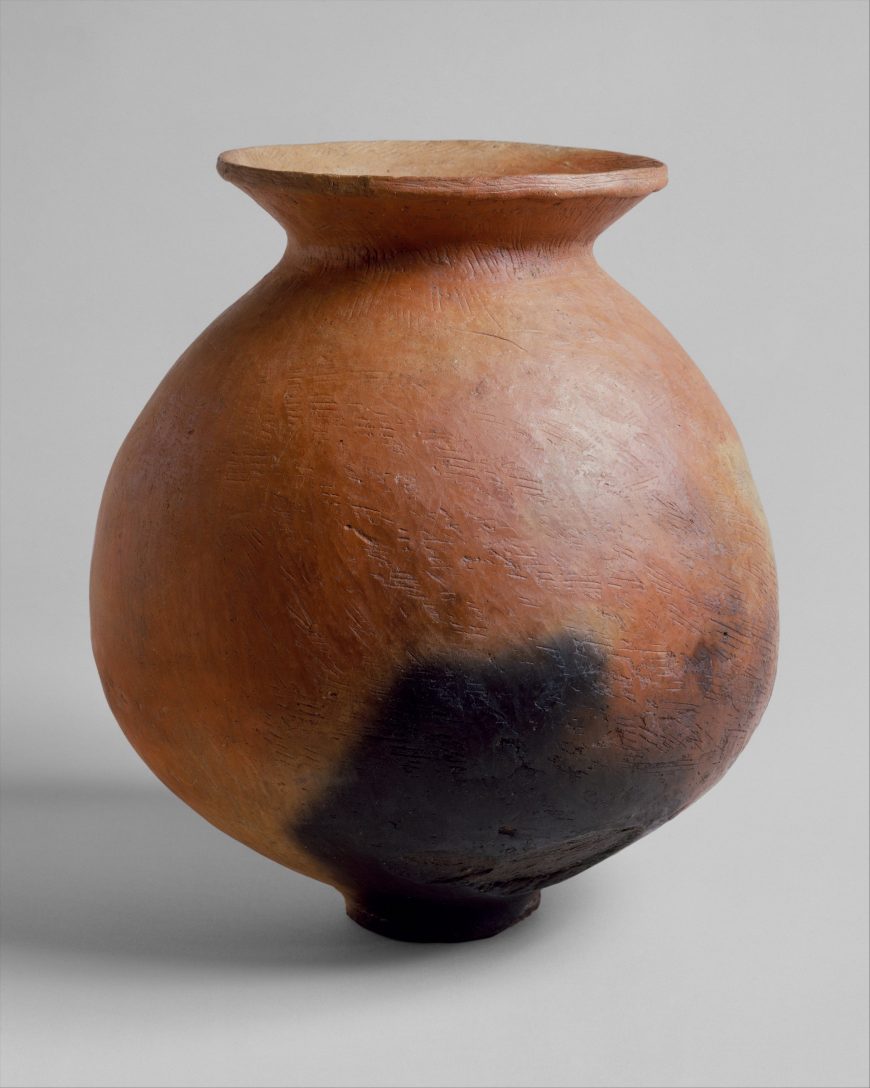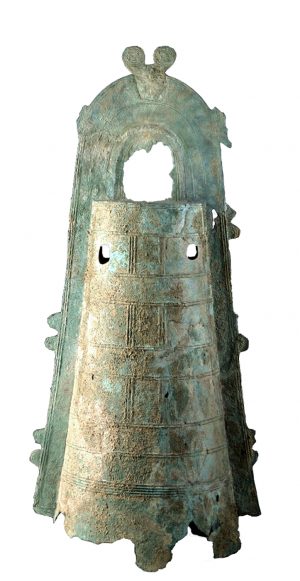
Jar, Yayoi period, c. 100-300 C.E., earthenware with incised decoration, 10 inches tall. (The Metropolitan Museum of Art)
Yayoi period (300 B.C.E.–300 C.E.): Influential importations from the Asian continent
Around 300 B.C.E., people from the Asian continent who were cultivating crops began to migrate to the Japanese islands. Archaeological evidence suggests that these people gradually absorbed the Jōmon hunter-gatherer population and laid the foundation for a society that cultivated rice in paddy fields, produced bronze and iron tools, and was organized according to a hierarchical social structure. The Yayoi period’s name comes from a neighborhood of Tokyo, Japan’s capital, where artifacts from the period were first discovered.
Yayoi-period artifacts include ceramics that are stylistically very different from the cord-marked Jōmon-period ceramics. Although the same techniques were used, Yayoi pottery has sharper and cleaner shapes and surfaces, including smooth walls, sometimes covered in slip, and bases on which the pots could stand without being suspended by rope. Burnished surfaces, finer incisions, and sturdy constructions that suggest an interest in symmetry are characteristic of Yayoi pots.

Bronze bell (dōtaku 銅鐸), Yayoi period, H. 126.5 cm (Saitama Prefectural History & Folklore Museum, Google Arts & Culture)
Some studies suggest that Yayoi pottery is linked to Korean pottery of the time. The Korean influence extends beyond ceramics and can be seen in Yayoi metalwork as well. Notably, Yayoi period clapper-less bronze bells closely resemble much smaller Korean bells that were used to adorn domesticated animals such as horses.
These bells, together with bronze mirrors and occasionally weapons, were buried on hilltops. This practice was seemingly linked to ritual and may have been considered auspicious, perhaps for the fertility of the land in this primarily agricultural society. The magical or ritualistic function of the bells is further suggested by the fact that the bells were not only clapper-less, but they also had walls that were too thin to ring when hit.
The bells became larger later in the Yayoi period, and it is believed that the function of these larger bells was ornamental. Across regions and over the span of a few centuries, such bells varied in size from approximately 10 cm to over 1 meter in height.
Additional resources:
For information on other periods in the arts of Japan, see the longer introductory essays here:
A brief history of the arts of Japan: the Jomon to Heian periods
A brief history of the arts of Japan: the Kamakura to Azuchi-Momoyama periods
A brief history of the arts of Japan: the Edo period
A brief history of the arts of Japan: the Meiji to Reiwa periods
JAANUS, an online dictionary of terms of Japanese arts and architecture
e-Museum, database of artifacts designated in Japan as national treasures and important cultural properties
On Japan in the Metropolitan Museum of Art’s Heilbrunn Timeline of Art History
Richard Bowring, Peter Kornicki, The Cambridge Encyclopedia of Japan (New York: Cambridge University Press, 1993)

